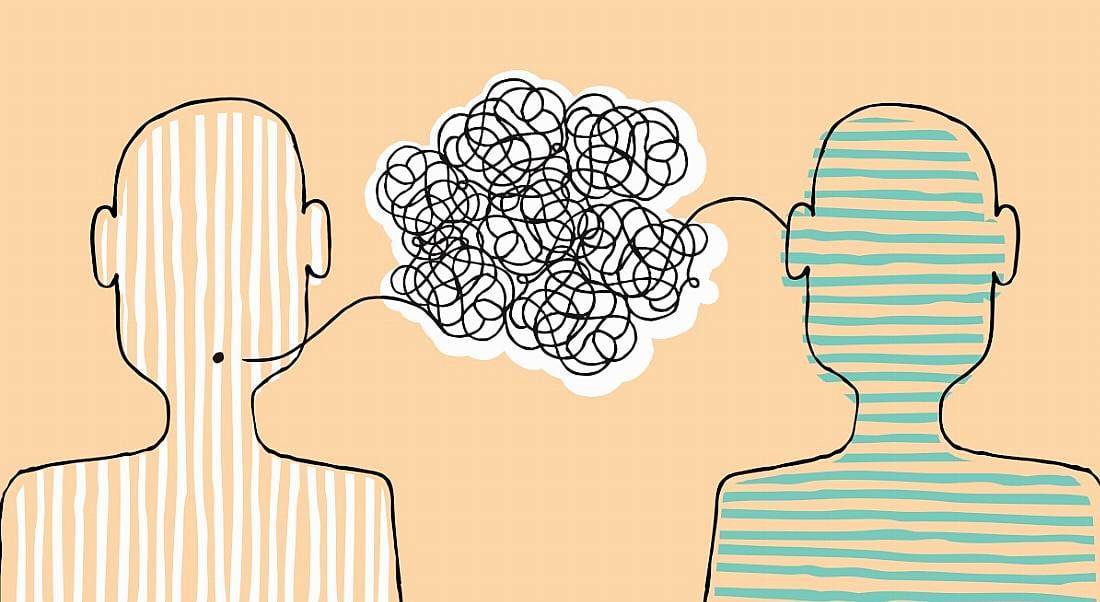Believe it or not, listening is a skill and one that can sometimes use a little polishing. The process of active listening requires more than just hearing what the other person is saying.
Active listening is a skill that enables the user to understand the context of what they are hearing on a much deeper level. In doing so you become more of an active participant in the conversation, improving emotional intelligence and adding to your own skillset.
Despite its usefulness in conflict resolution and relationship building, not every workplace teaches its workforce how to engage with active listening. If you would like to add this powerful soft skill to your repertoire then continue reading for some top tips on how to do just that.
Face value
Our eyes are arguably the most expressive aspect of our face, as they tend to give away our feelings and emotions. Eye contact is crucial to letting a co-worker know that you are listening to them.
Not only that, but by looking at someone while they are speaking, you can pick up on non-verbal cues and gestures allowing you to adjust your own body language and level of participation in the conversation.
Though it varies from individual to individual, some experts would advise maintaining eye contact for roughly 60pc to 70pc of the conversation, looking away periodically. This shows that you are present, but also prevents prolonged staring that may feel intimidating for both parties.
Personal body language
Responding non-verbally through body language is a great way to show others that you are actively listening to the conversation and taking in what is being said. Actions such as nodding your head, smiling and slight hand gestures let the other person know that you are invested in the discussion and are an active participant.
Additionally, how you hold your body can also let a person know how receptive you are to the conversation, for example if your posture is slumped or you are leaning against something they might feel that you are losing interest.
By removing barriers, leaning forward and mirroring the other person’s movements you will likely appear warm, interested and open to conversation.
Participation
It is unreasonable to expect someone to sit still, nodding, smiling and staying quiet, for the duration of a conversation. But there is a vast difference between a discussion and a lecture, so if and when you want to interject, just make sure that you observe some basic rules of etiquette.
Namely, don’t interrupt. Wait till the other person finishes what they are saying and then say your piece. Try not to make it seem as though you spent the majority of your time planning your response and also, try to acknowledge previous comments, instead of glossing over them to make your own points.
Keep your cool
If you find that you don’t understand what is being said, or that the conversation lost you somewhere along the line, don’t make yourself look foolish by guessing what might have been said or responding incorrectly.
If you are confused by something just be honest and ask for further clarification. It can often help to paraphrase what the other person has said, just to show that you are listening and confirming for yourself that you are following along.
Also, if you are practising your active listening by attempting to solve conflict with a co-worker, it is important that you don’t lose your temper, jump to conclusions or show too much emotion.
Active listening is all about reading the other person and responding in a way that lets them know that you have actually heard them, so controlling your feelings – whatever they may be – until it is your turn to speak is a key element.
Make it fun
Personally, I am of the opinion that if you really want to learn a new skill, the first thing you need to do is make it a fun experience. Because, as the saying goes, work never really feels like work when you are enjoying yourself.
If you want to improve your active listening, but it feels like a slog, there are a range of games you can play to help build up those skills. Why not try spotting the mistake? This is where a team lead tells a long story with a mistake purposefully inserted. It is up to the group to listen intently to identify and expose the error.
Trust-based exercises can also be useful, such as the blindfolded walk, wherein the subject tries to navigate the room using only the verbal clues from their teammates.
Ultimately, the working world and indeed your personal life will give you ample opportunity to practise your active listening skills. It is all about paying attention to the signals. Your eyes and your brain are already interpreting the clues, now you just need to listen.
Don’t miss out on the knowledge you need to succeed. Sign up for the Daily Brief, Silicon Republic’s digest of need-to-know sci-tech news.




